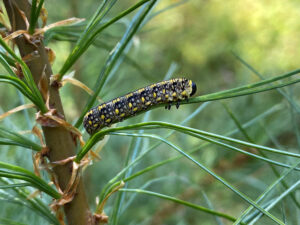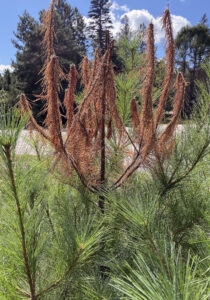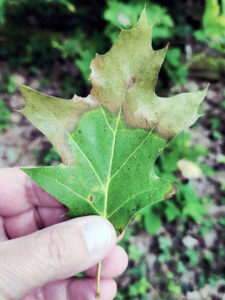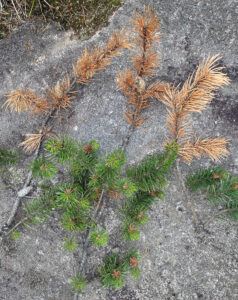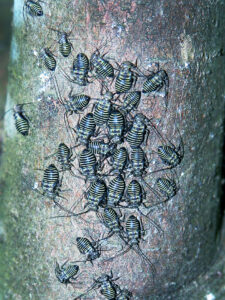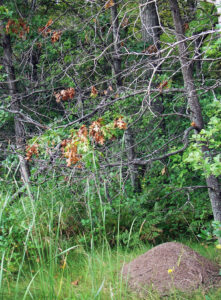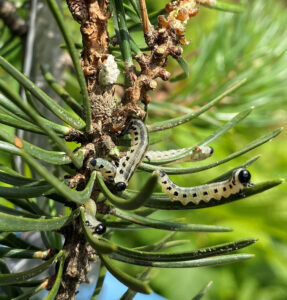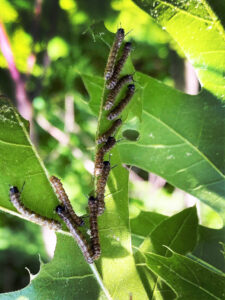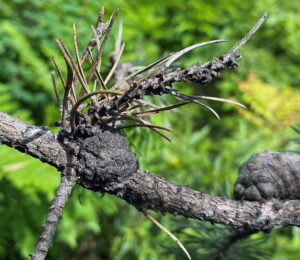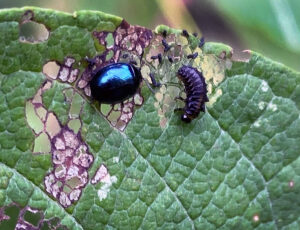
An imported willow leaf beetle adult and larvae. / Photo Credit: Wisconsin DNR
By Linda Williams, DNR Forest Health Specialist, Woodruff
Linda.Williams@wisconsin.gov, 920-360-0665
Imported willow leaf beetle (Plagiodera versicolor) is a small, shiny, blue-black beetle as an adult, and the larvae are small, solid black and spikey. Both feed on the foliage of willow and poplar species. Two generations per year are possible.
The invasive pest was first detected in the United States in 1915, likely coming from eastern Europe.

